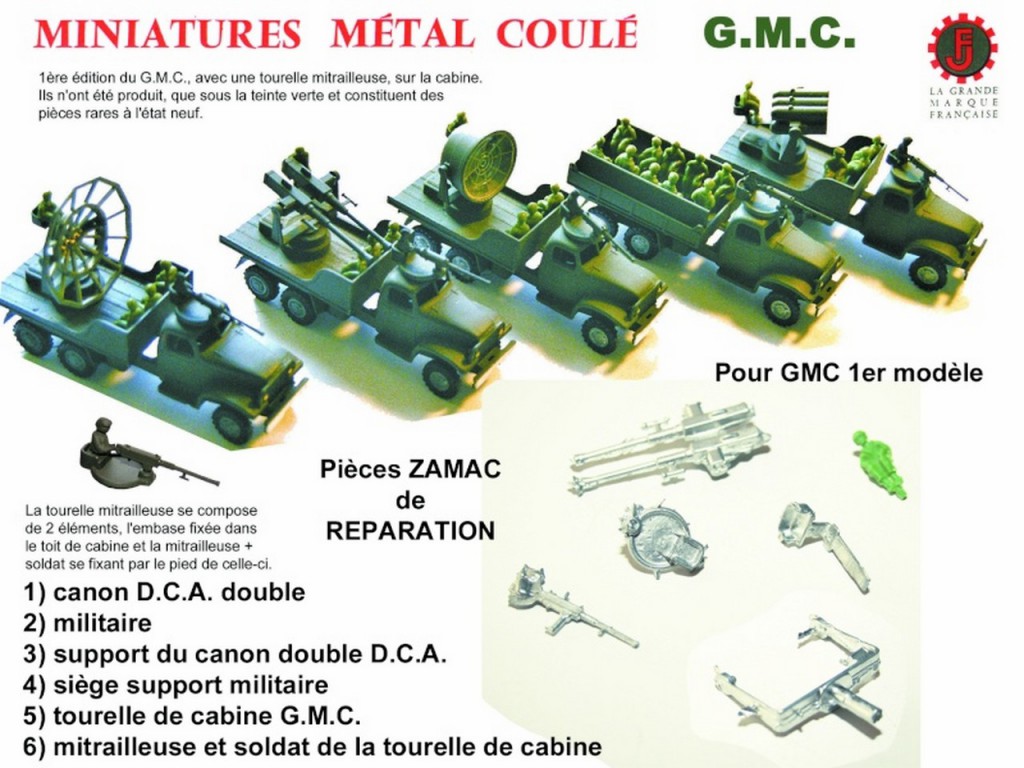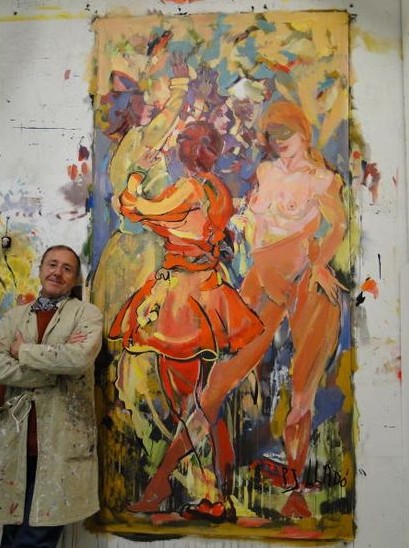The strange rail vehicles by France-Jouets
(Written by PG)
Created in Marseille in 1946 by JM Moheng and H Fauvel first with the name “Wamoo”, then “France-Jouets” ….
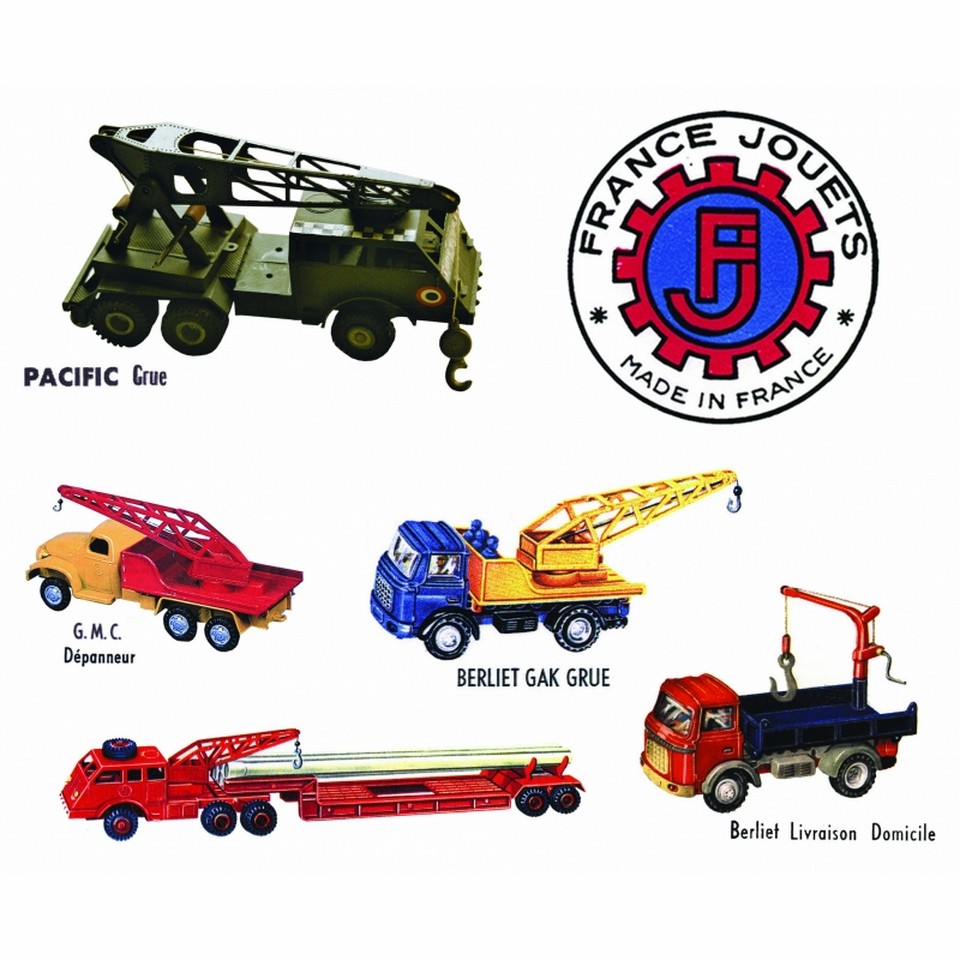
… .this Company established itself on the market by producing tin toys, zamak and plastic.
If it may include of any kind, especially road vehicles, often battery operated, such as, for example, buses ….
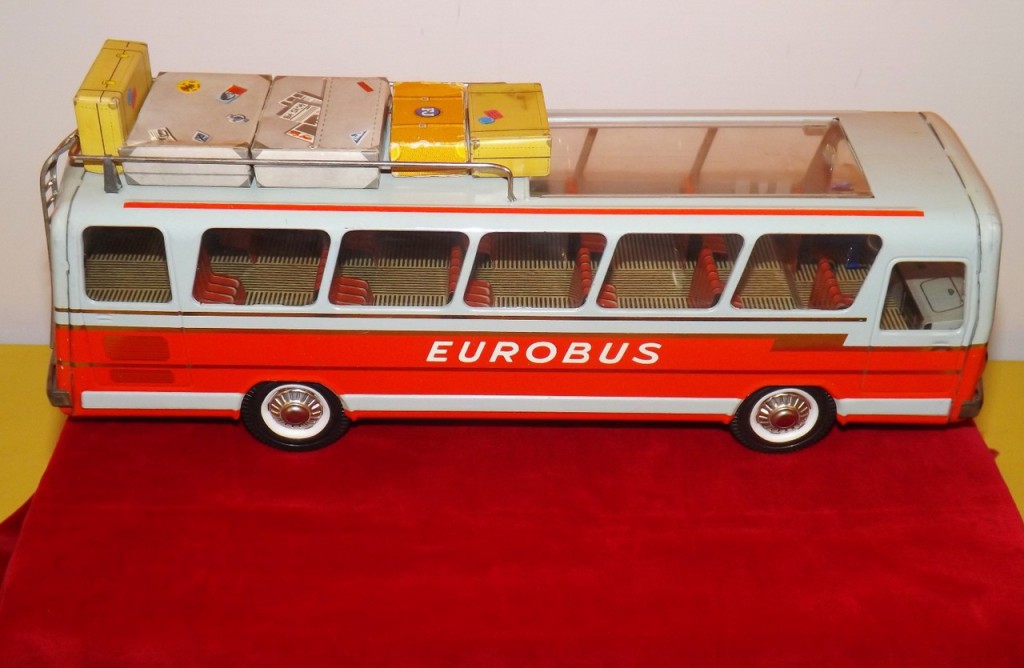
… Military
… .vehicles
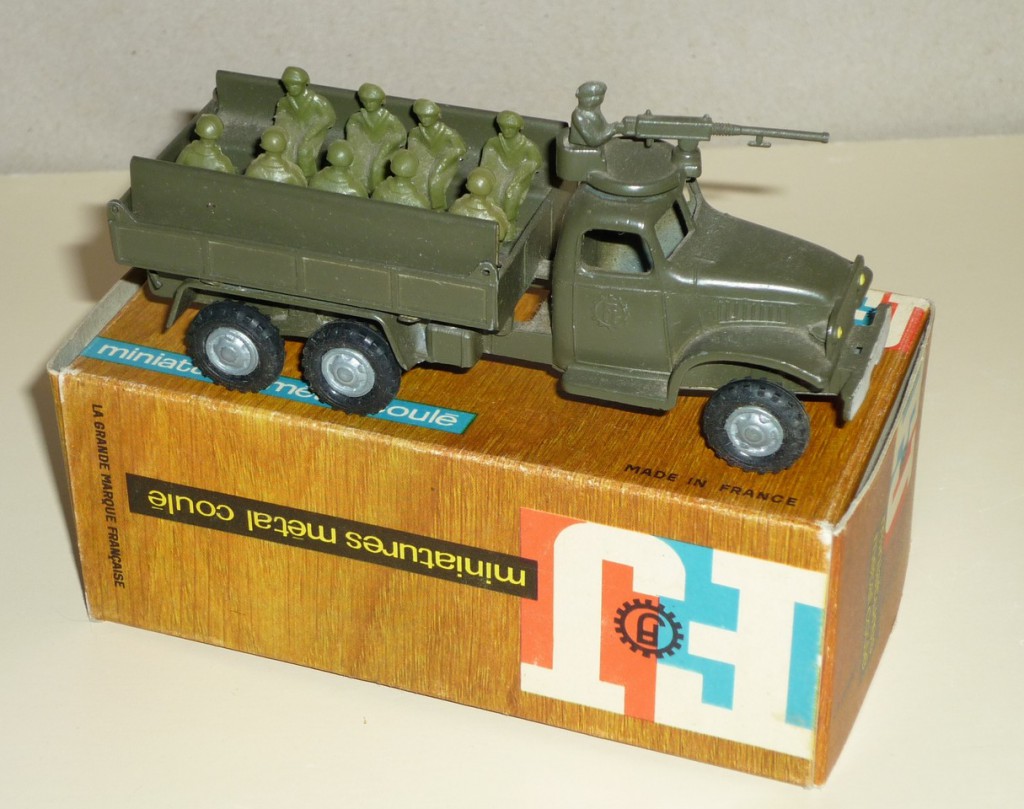
… … Remote-controlled cars.
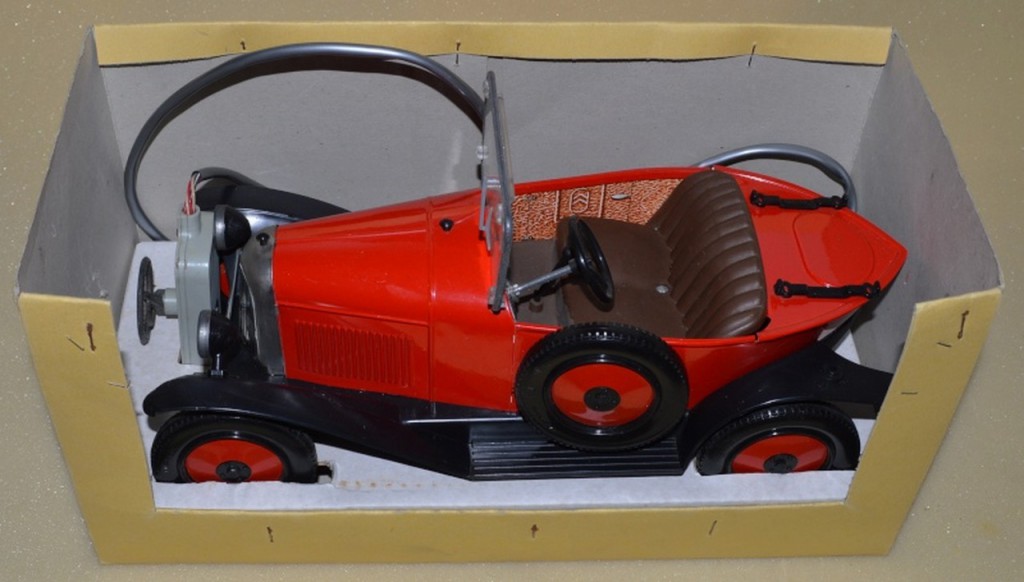
… Trucks of all sizes …
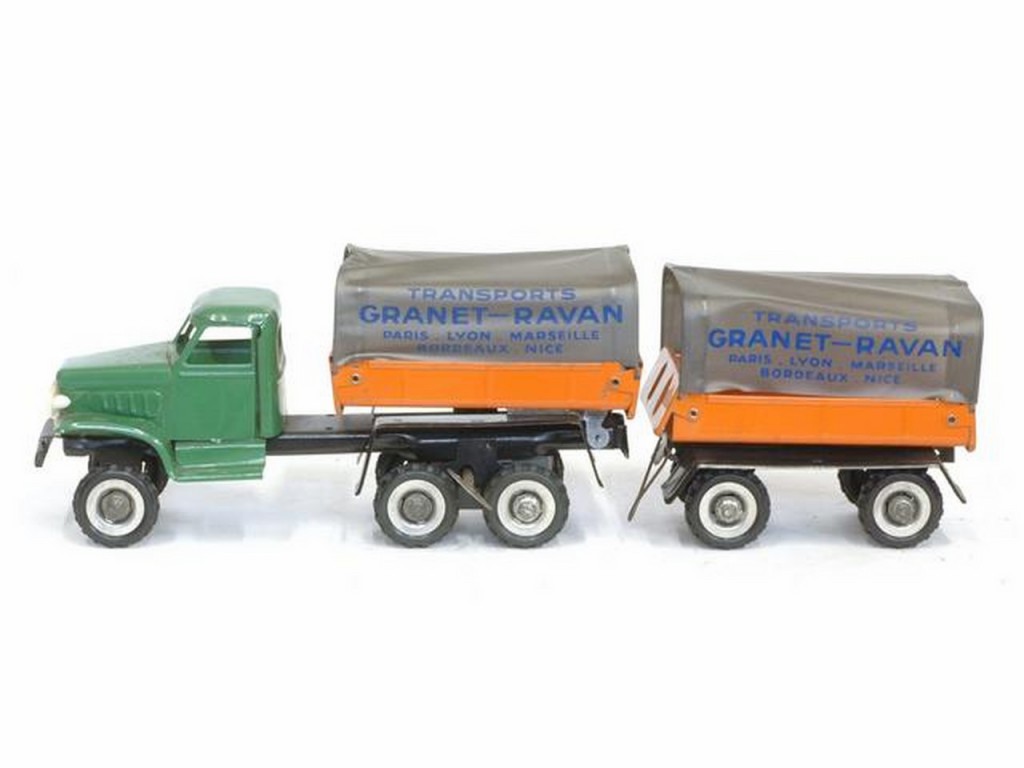
… .and for all uses ….
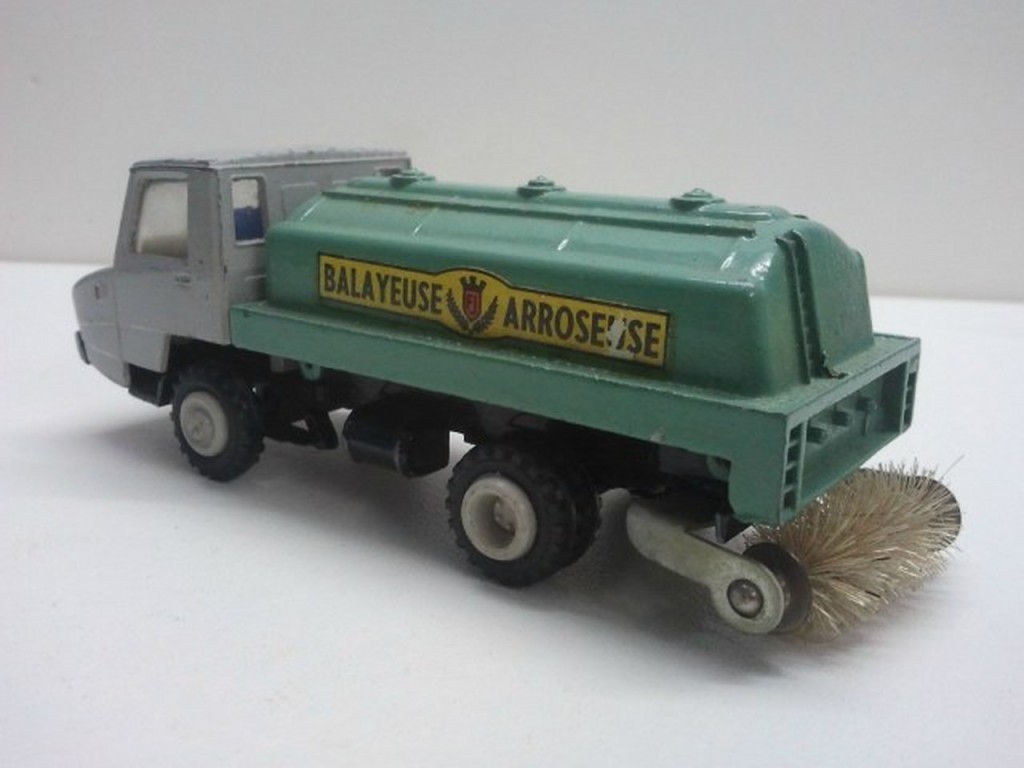
… Car which you can repair and change ….
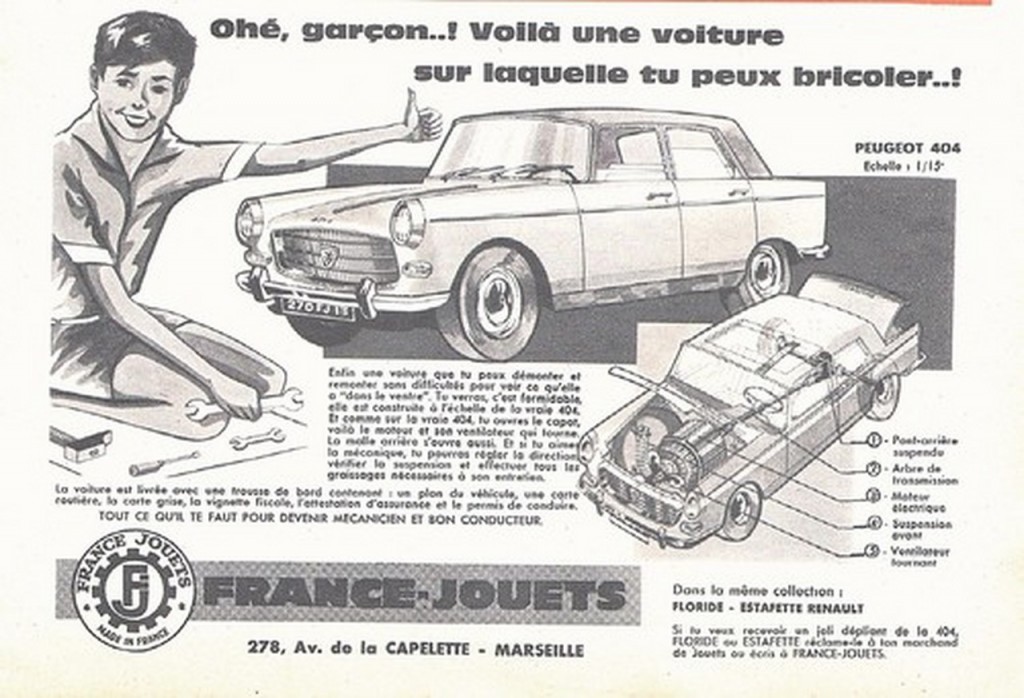
In the ’50s the company absorbs other brands, such as GEM in 1957.
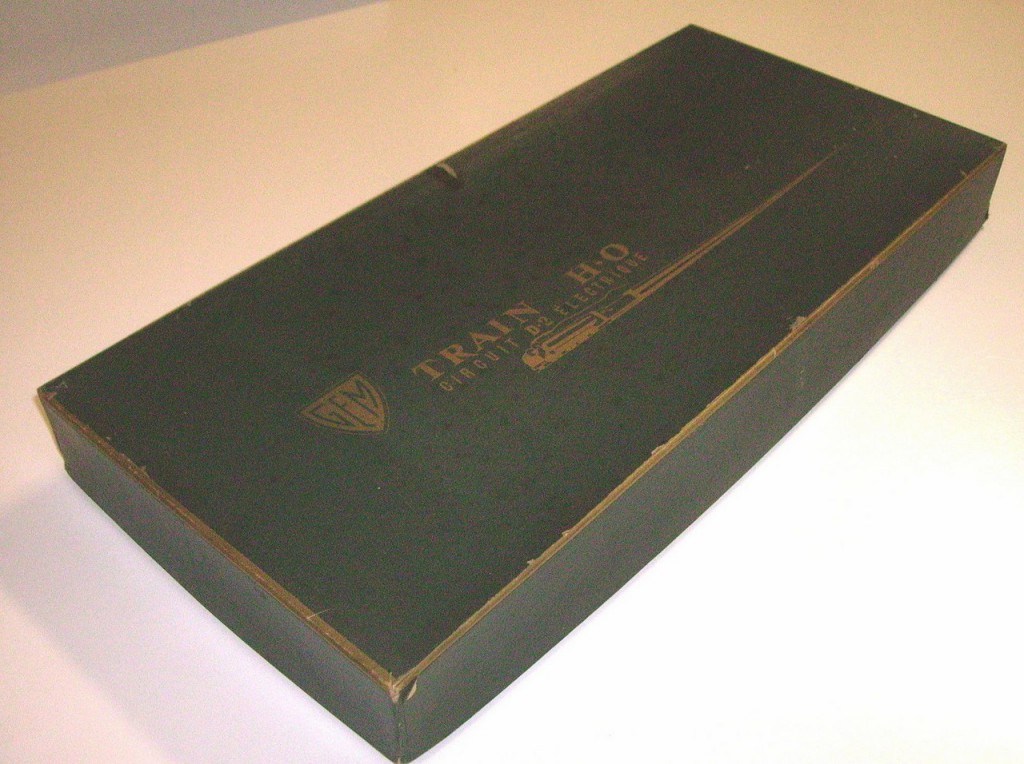
In this case it is not the trademark of Italian Biaggi, but, as described in thearticle about this last, of what bears the initials of George Ernest Merli,
who had filed in 1951 to propose to the French market’s trains tin OO scale, with carriages and its production cars and locomotives of the German Dressler.
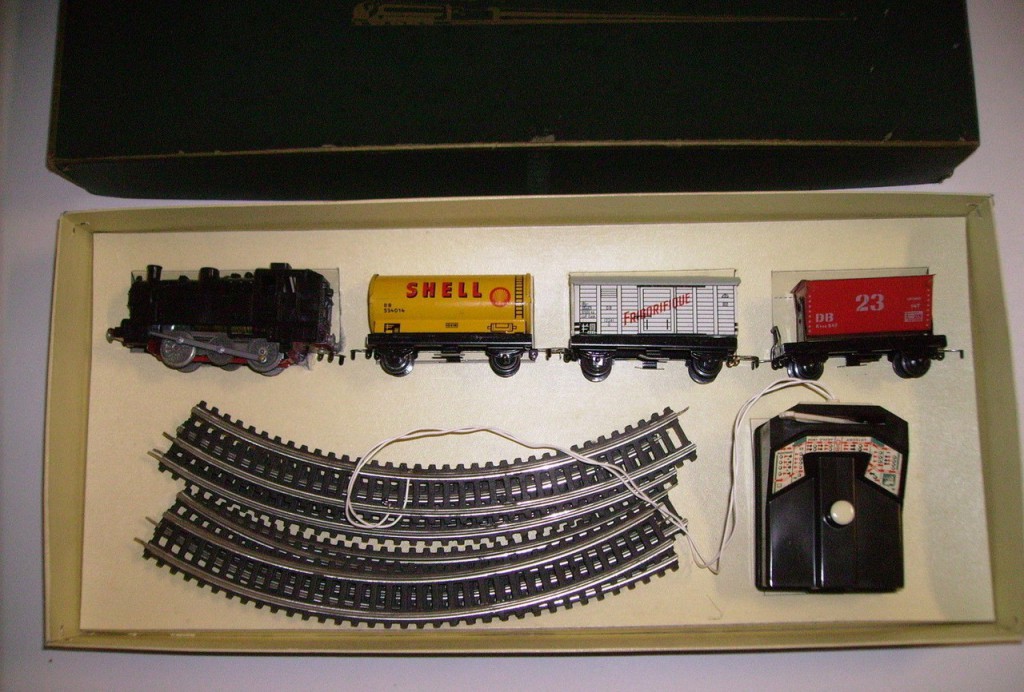
The cars of this set have the odd distinction of being labeled as belonging to the “DB”, but to have written in French like this hoppers ….
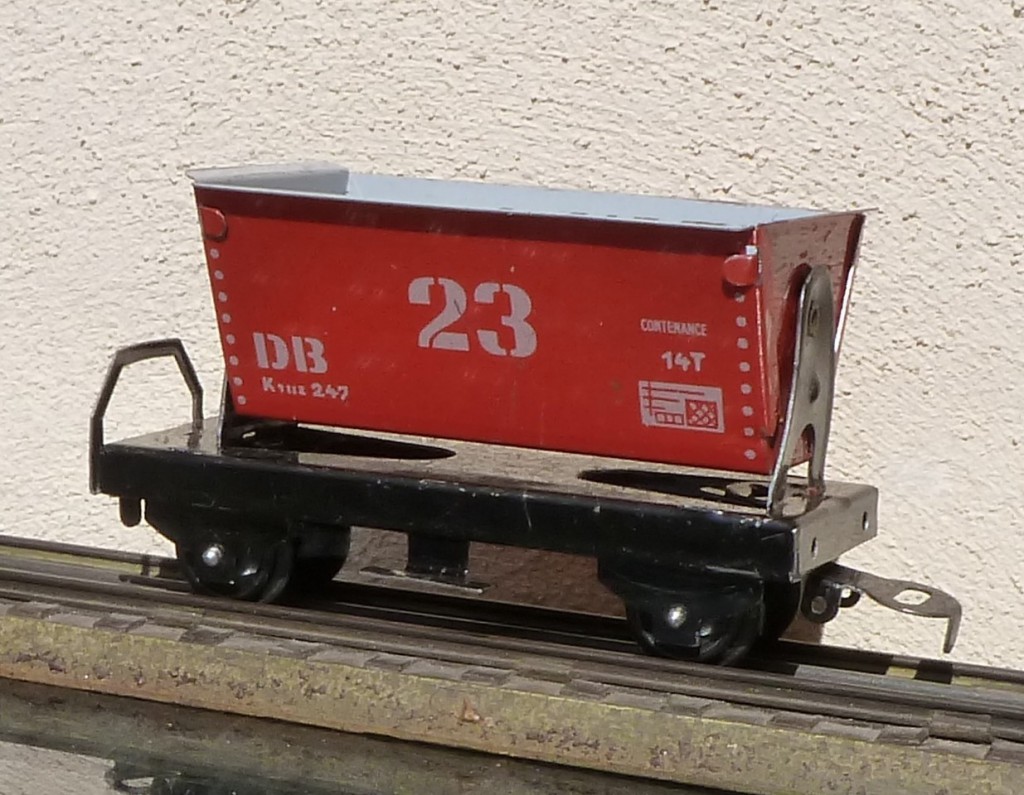
… .this wagon-barrel Shell ….
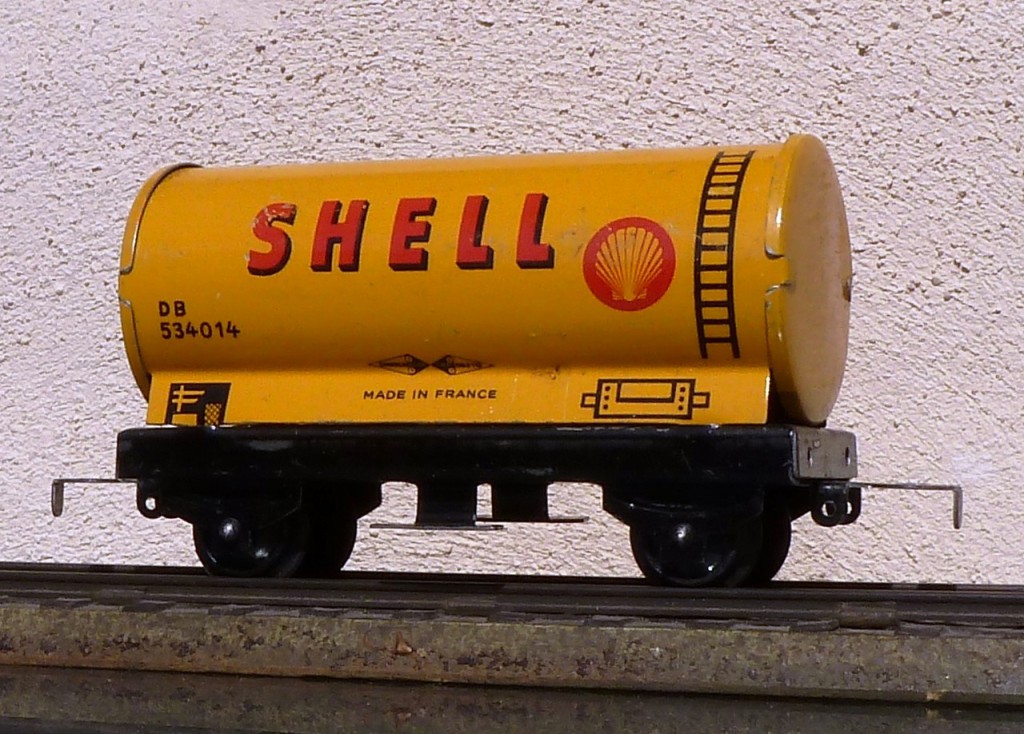
… Or this “Frigorifique” …
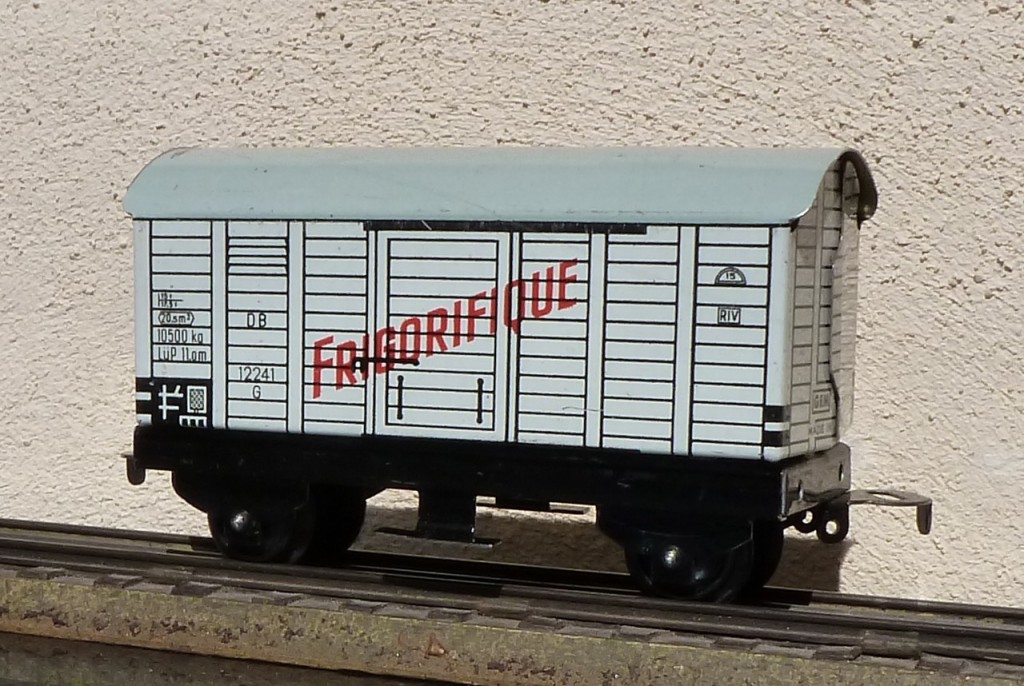
Even in France-Jouets railway has always shown a preference for strange vehicles or special. This category includes the so-called railbus.
In reality some examples of these rare vehicles is already in the 20’s in France ….
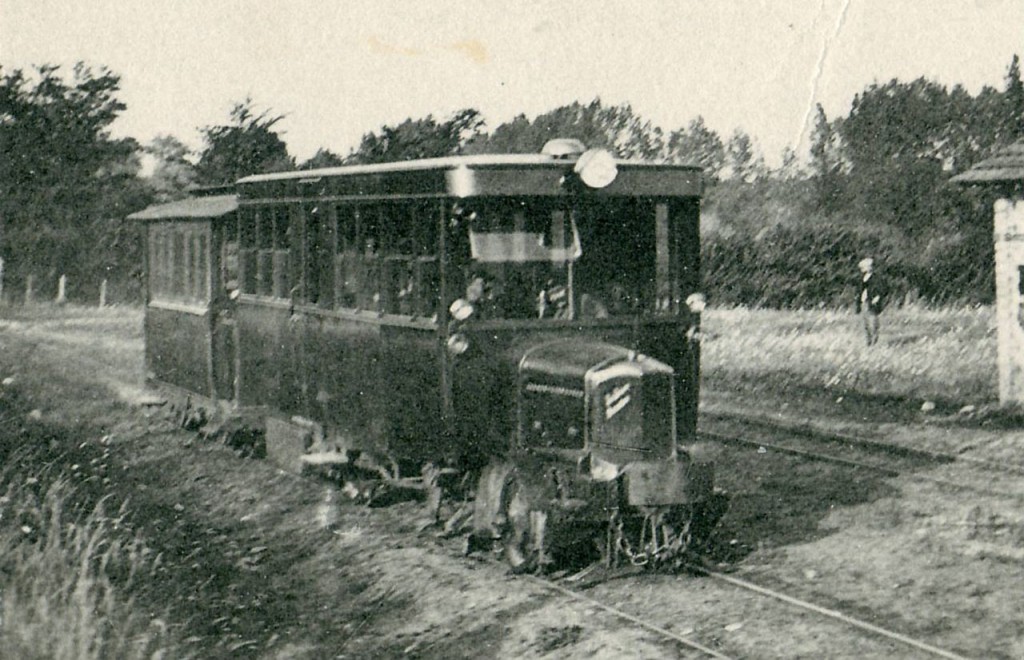
… In the 50’s in Germany …
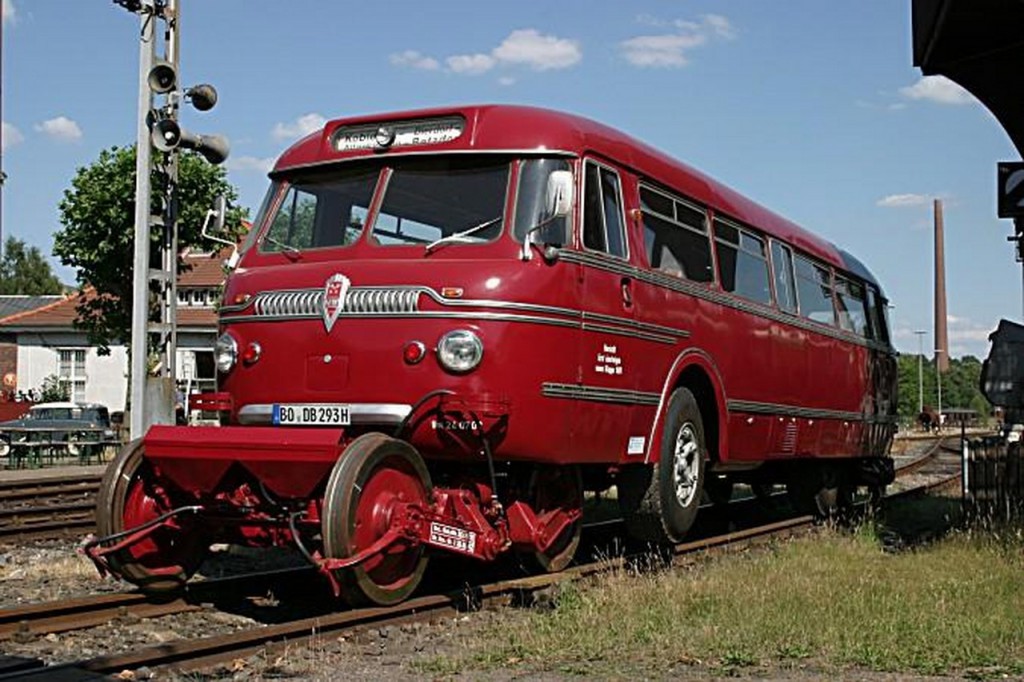
… The United States …
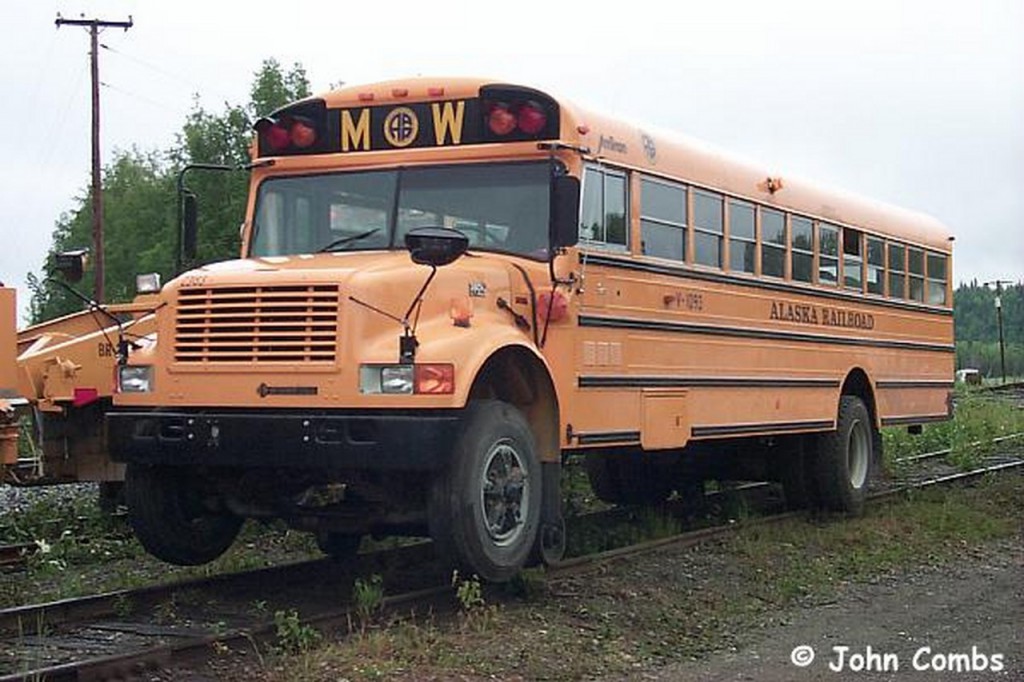
… .here in reproduction in HO Bachmann 1961, along with a Jeep from the same manufacturer …
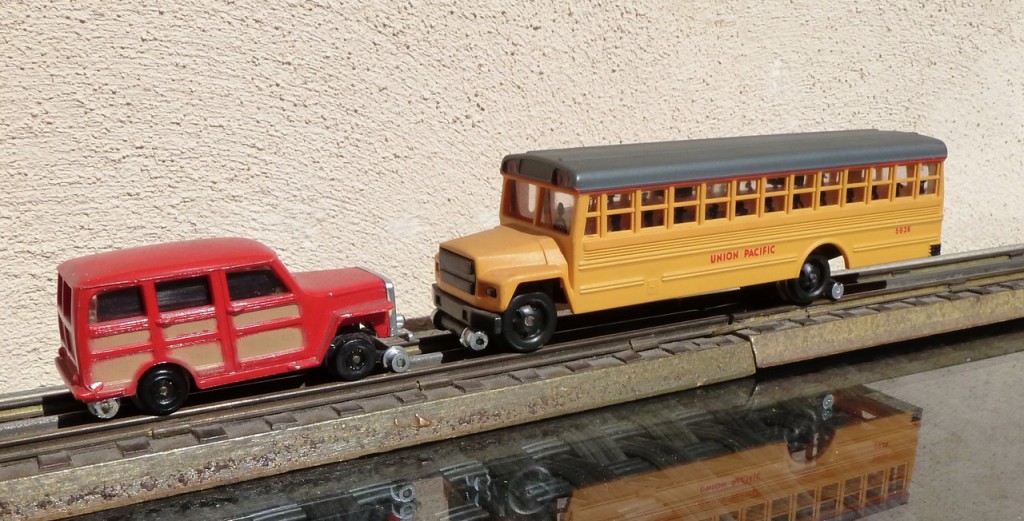
… but it is still
in South America ….
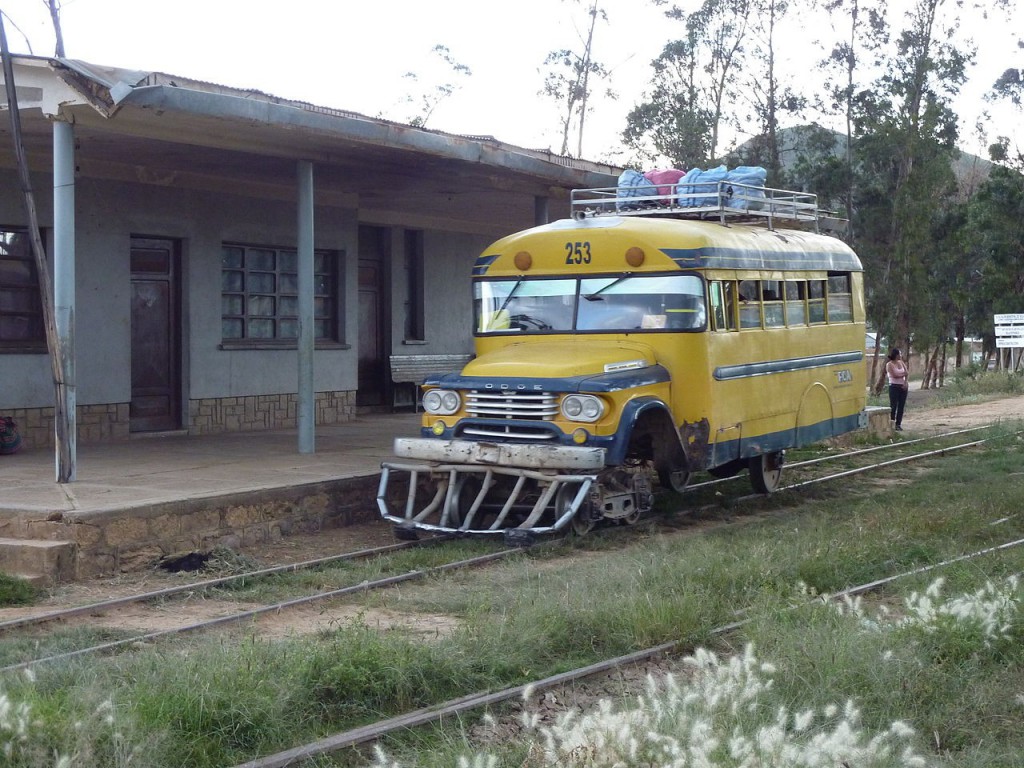
… .that have circulated the most picturesque specimens.

In Italy the best known of rail buses are the “Emmine” of the Calabro-Lucane Railways …
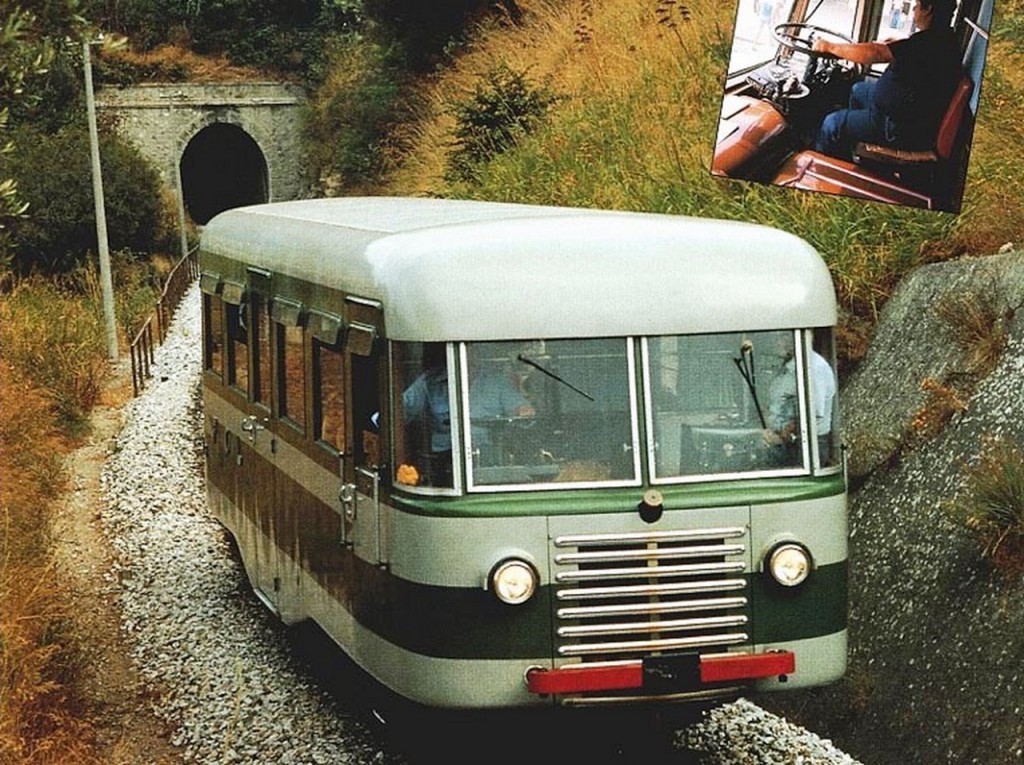
… While much less known is the “coach”, as it was all era, provided by the OM to the FNM in 1930 ….
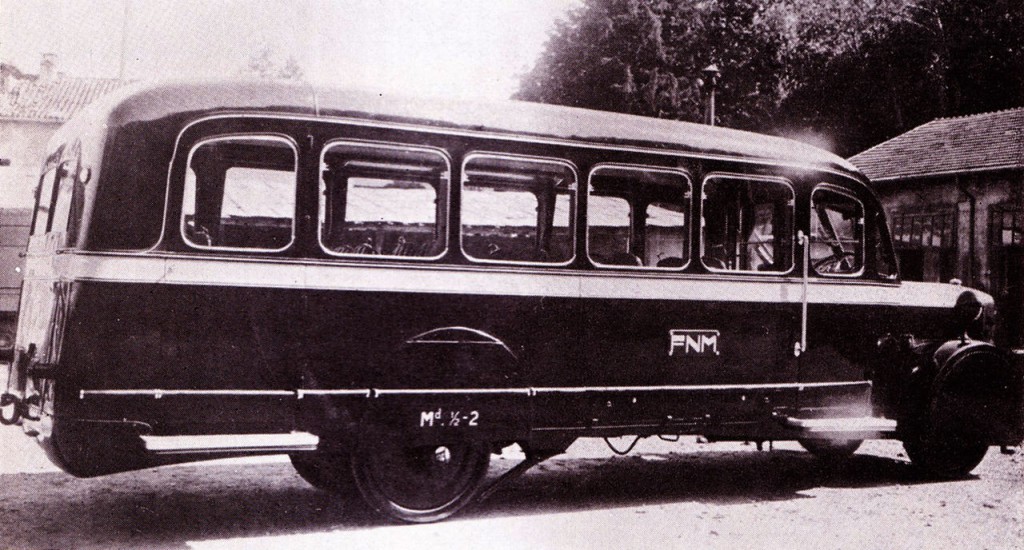
… Subject in the 50s of this craft reproduction in HO scale.
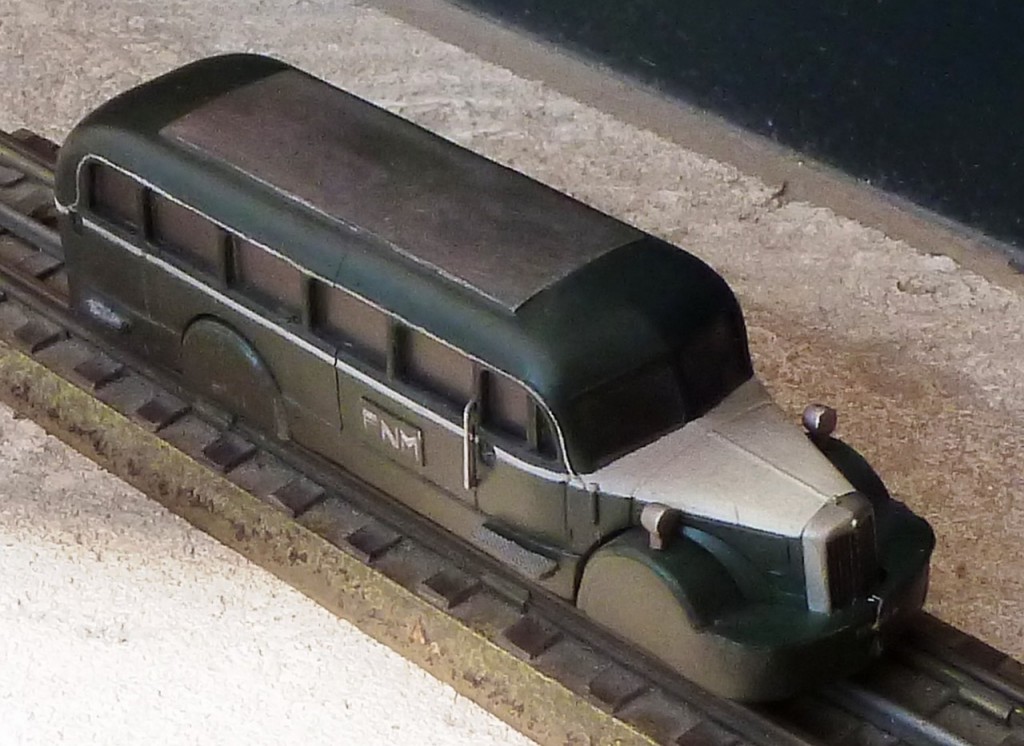
Returning to France Jouets, in 1955 this manufacturer decided to produce, starting from an already existing body, a small railbus scale HO / OO driven by an electric motor powered by a battery …
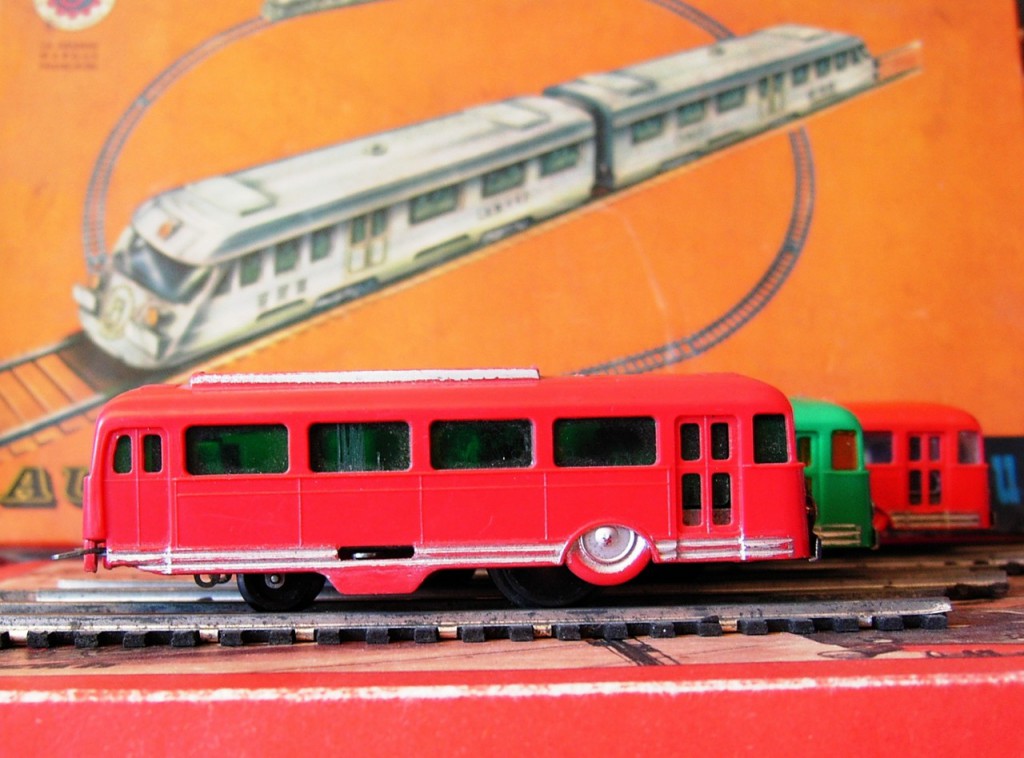
This unique vehicle is equipped with easily removable metal frame from the body in order to change the cylindrical battery that fits at the interior of the body ….
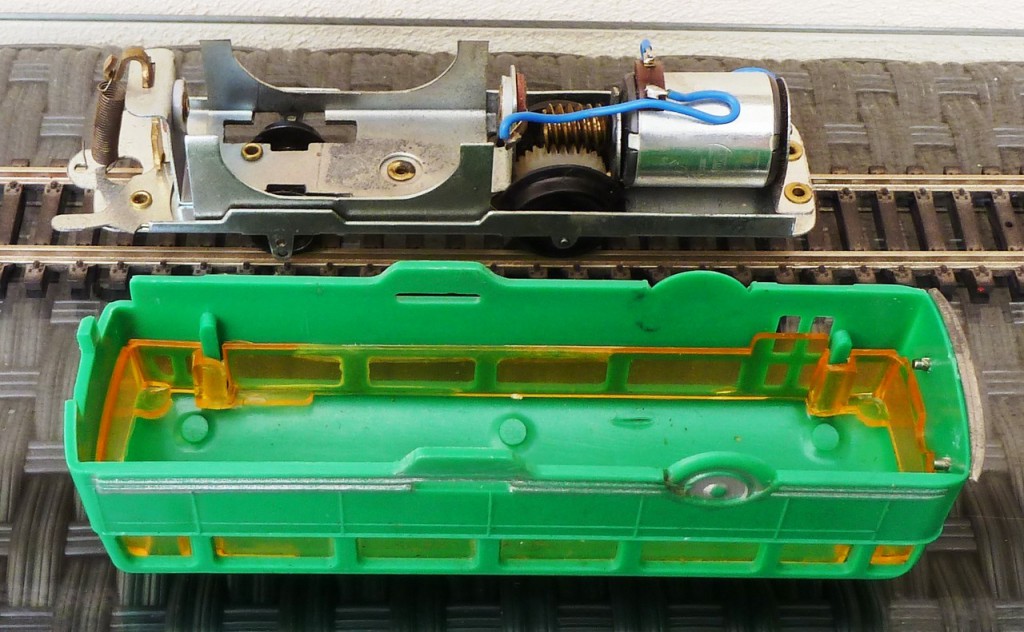
The small electric motor engages on front axle, equipped with railway wheels of large diameter plastic, while the rear bearing axis is equipped with small wheels.
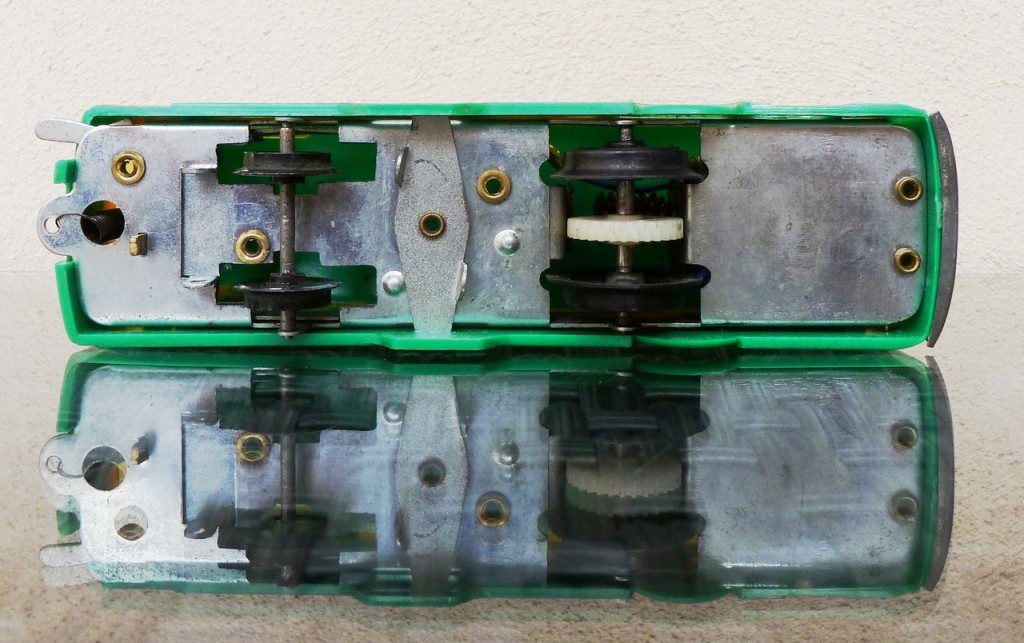
The body is red or green plastic … ..
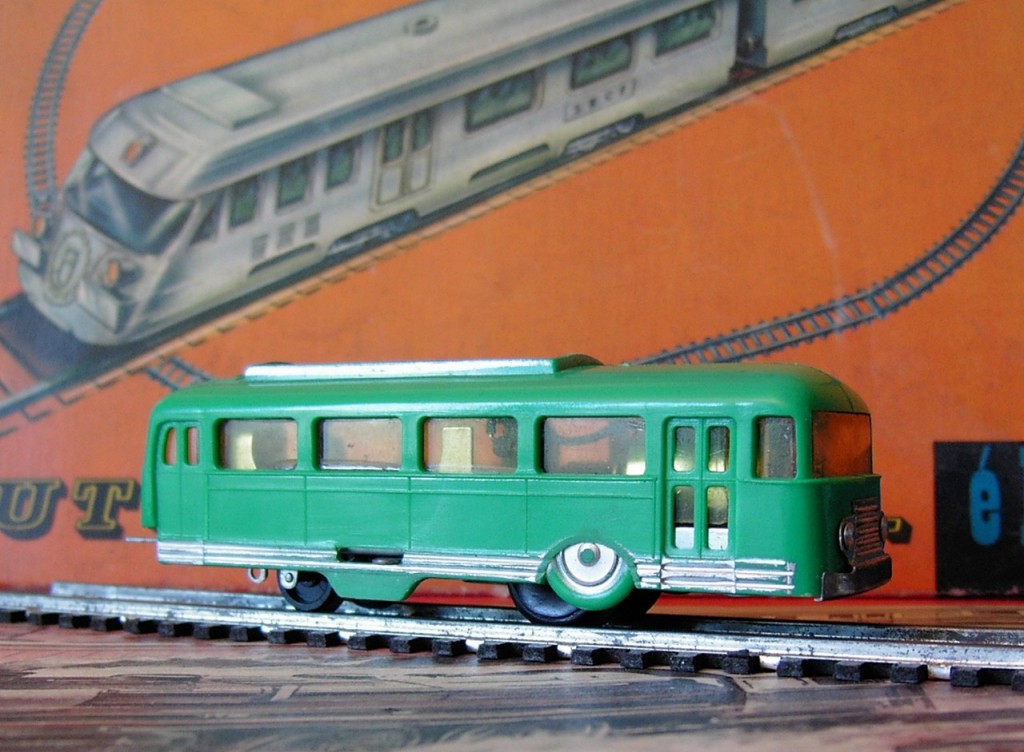
…. colored in the mass and finished by hand.
In one of the era brochure builder it mentions that …
“… .Our buses can operate independently of any plastic rails with two and three rails without affecting the running of other trains …”
Note that the actual vehicles which resemble rail bus France-Jouets are the Emmine of FCL.
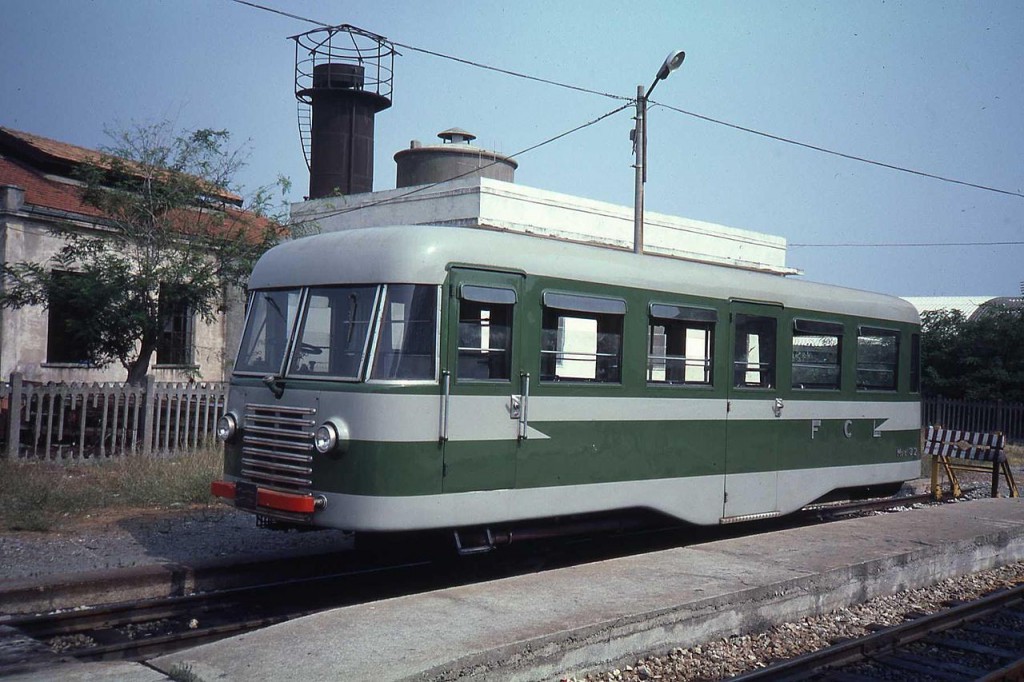
In 1959 France-Jouets precedes by a few months the output of Breda TEE Rivarossi …
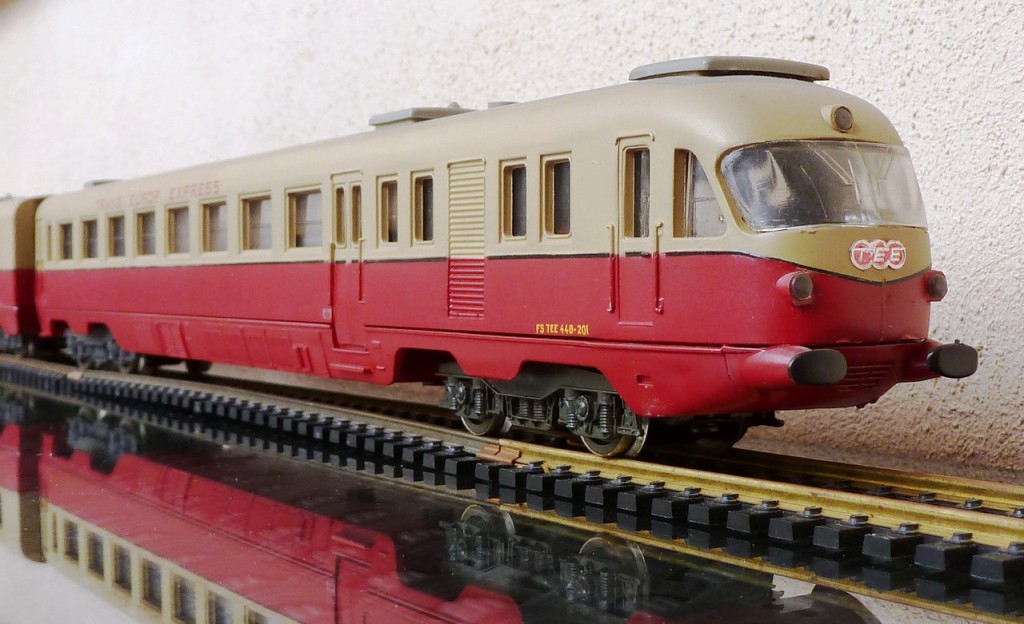
… Presenting its particular “toy version” on two elements.
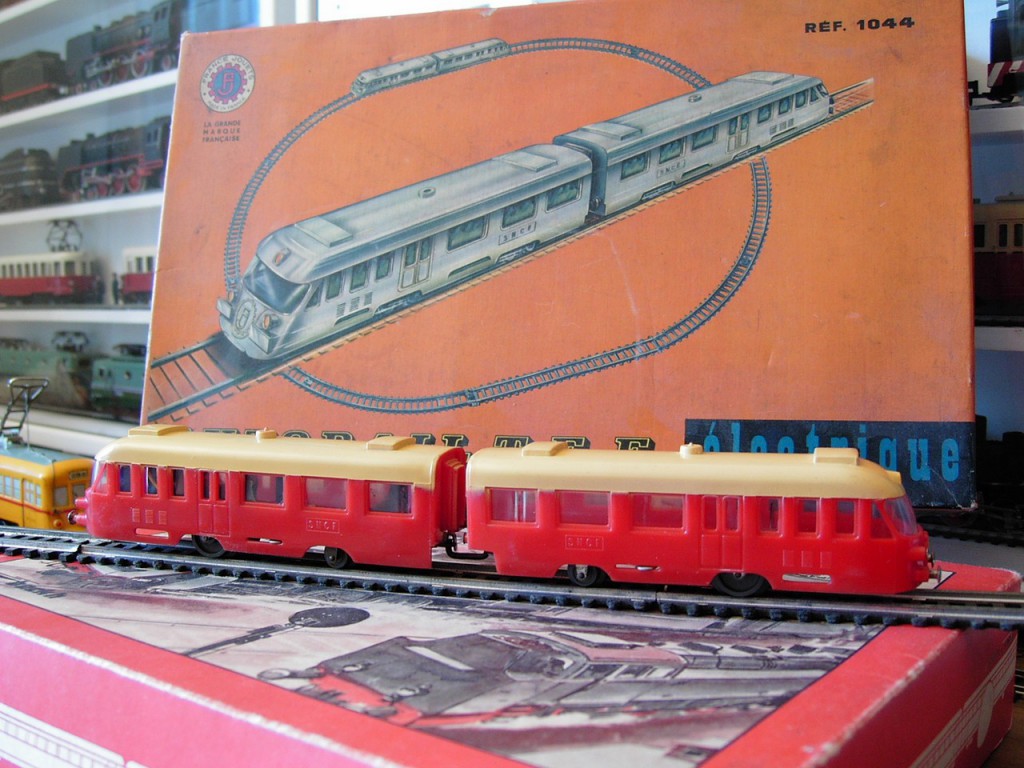
Of course the France-Jouets Toy TEE undoubtedly plays in a lower category than the beautiful reproduction of Como firm ….

…. and it is presented in a small set with a plastic rails circle.
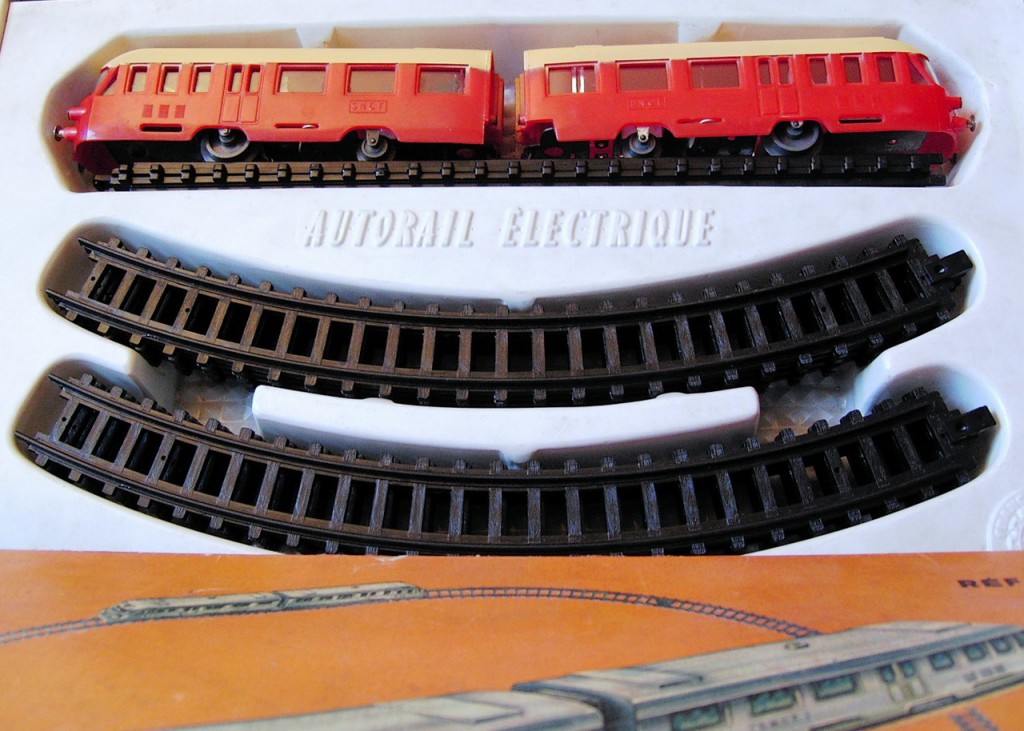
A singular peculiarity lies in the fact that it adopts the same frame of the rail bus, this time of engine equipped on a unit and crowds on the other.

The result is a funny propelled two elements (marked SNCF !!), with four aces in all, two with large wheels, two with small wheels.
The superstructure of the two elements is made of two plastic colored parts in the mass, for the red and yellow case for the roof.
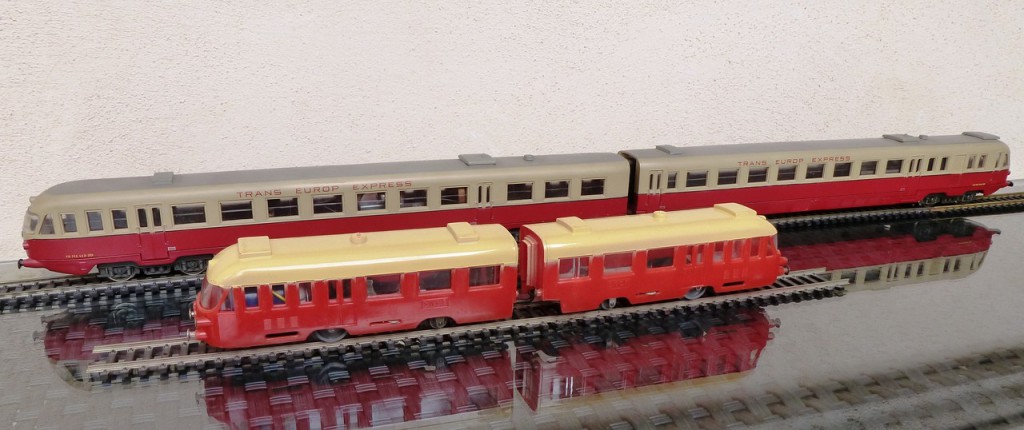
The market shows no sign of liking it much either this little TEE faithful to reality nor these strange bus freelance …
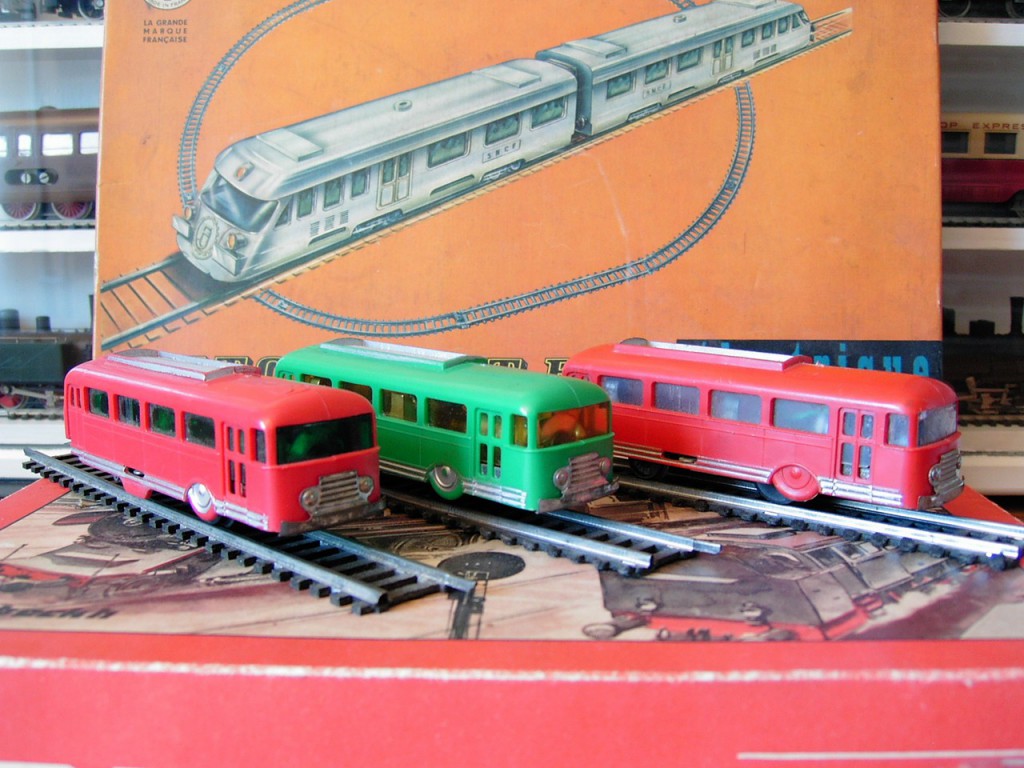
… And, despite their undoubted originality, their production lasts just over a year ….
Note that I have found traces of limited and ephemeral sales of this material, but also in Italy, from Noè and Mastro Geppetto in Milan, De Bernardini in Vicenza, and Testi in Padua.
I think that most of the pieces produced both ended up in the dustbin or destructive childish hands and making them today quite rare and sought after, especially by collectors of this brand.
We meet now Pierre Jean Llado
(@March 31, 2016)

